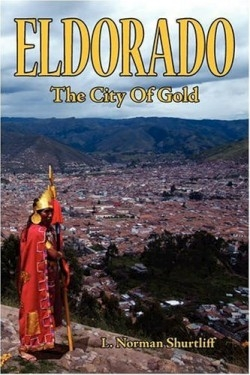Eldorado
The City of Gold
An American graduate student from UC-Berkeley visiting Peru as a geo-archeological point man for a Spanish conglomerate finds himself kidnapped for ransom by a group of Maoist rebels known as The Shining Path. Peter Martin builds a connection with fellow hostage Monica Rodriguez an official from the tourism board but the two invest that crisis-forged bond with unequal importance. An alternating second timeline follows the triumph of conquistador Francisco Pizarro over the Incan Empire in the 1530s made possible by a serendipitously timed civil war between factions from Cuzco and Quito a decimating wave of small pox and no small measure of deceit. Gold and silver forcibly extracted from this region was reprocessed for ostentation in Seville though much of it never left the country.
Pizarro’s partner-turned-rival Diego de Almagro and other officers precipitate bloodbaths and commit other abuses that the commander does little to hinder. The take on Lima’s founder runs toward the sympathetic especially in his happy marriage to the considerably younger Incan Princess Lacoya Ines. A minor liberty is taken here—the historical Ines died in Spain but in Eldorado she’s said to have met her demise in her homeland. Though Pizarro turns a blind eye to soldiers’ recreational pillaging he’s described as “a commanding courageous figure” when facing death. The historical narrative contrasts substantially with the modern story but it bolsters the significance of an ancient secret which could cost lives to keep.
In later developments of the contemporary thread Monica compromises a mighty family responsibility to travel seven thousand miles and ask a slow-to-mature Peter “‘Do you love me?’” His astoundingly audacious answer conceptualizes their emotional trajectories as franchise meals: “‘I love Quiznos but I love Taco Bell A&W and the Japanese place for variety. My most favorite is Quiznos but I’m worried that if I ate there everyday then it would get boring. I like exploring new things and keeping my options open.’” Ouch! That had to sting.
Pictures of landmarks add a concrete frame of reference. The text isn’t streamlined though: facts stated are soon represented in barely reworded form as if mentioned for the first time. Chapters close with notes on tourist attractions or historical events which put matters into context even while breaking up the flow. The resolution is fairly open-ended.
The author resided in Argentina for two years during a mission for the Latter Day Saints and has returned to South America several times since to study the culture and history. The resulting novel covers momentous change: the toppling of a complex culture the rapid enrichment of a rising colonial power. One hundred-plus financially motivated Spaniards succeeded against 80000 Incas—certainly a dramatic story. What Eldorado puts across most clearly is a sense of wonder at the magnitude of wealth appropriated much of which is probably still in Peru either lost to the living or known to only an elect cadre.
Reviewed by
Todd Mercer
Disclosure: This article is not an endorsement, but a review. The publisher of this book provided free copies of the book and paid a small fee to have their book reviewed by a professional reviewer. Foreword Reviews and Clarion Reviews make no guarantee that the publisher will receive a positive review. Foreword Magazine, Inc. is disclosing this in accordance with the Federal Trade Commission’s 16 CFR, Part 255.

